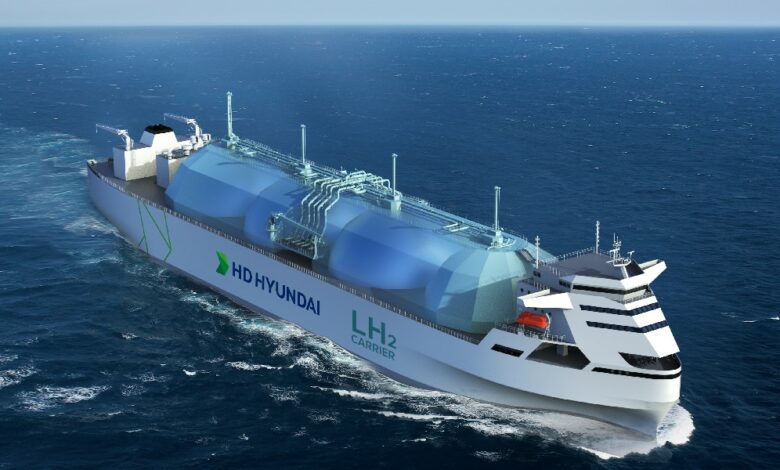
The nascent seaborne liquefied hydrogen trades have received a big boost with Japan’s largest shipowner teaming with South Korea’s largest shipbuilder and Australia’s largest oil and gas producer to study how to transport the fuel.
Mitsui OSK Lines (MOL) has signed a non-binding memorandum of understanding with HD Korea Shipbuilding and Offshore Engineering and Woodside Energy as well as Korean owner Hyundai Glovis to jointly study the development of shipping solutions to enable bulk marine transportation of liquid hydrogen.
The participating companies will study the technology, safety, construction, operation, and economics of a carrier with 80,000 cu m tank capacity, with the aim of establishing a liquefied hydrogen supply chain in Asia and other regions.
Currently the only trading liquid hydrogen carrier in the world, the Suiso Frontier, has just one 1,250 cu m vacuum-insulated, Type C storage tank, with many parties around the world working on how to make larger capacity designs for the fuel which is transported at -253°C.
If a project results from the MoU between the Korean, Japanese and Australian parties, the aspiration is to have a debut vessel built and in operation by 2030.
The liquefied hydrogen carrier would, under its concept design, use hydrogen as its main fuel.
Last September MOL joined forces with compatriot owners Nippon Yusen Kaisha (NYK) and Kawasaki Kisen Kaisha (K Line) as well as Kawasaki Heavy Industries and industrial gas firm Iwatani Corporation to develop hydrogen carriers together in a new company called JSE Ocean.
The country, via Kawasaki Heavy Industries, is already the pioneer of the seaborne hydrogen trades with the delivery of the Suiso Frontier, the world’s first liquefied hydrogen carrier.
Japan’s Basic Hydrogen Strategy identifies hydrogen as the alternative to fossil fuels as it targets decarbonisation. In the strategy Japan commits to a target of 3m tons a year of hydrogen by 2030, 12m tons a year by 2040, and 20m tons a year by 2050.

Suggest you don’t go through the Red Sea with that……………….